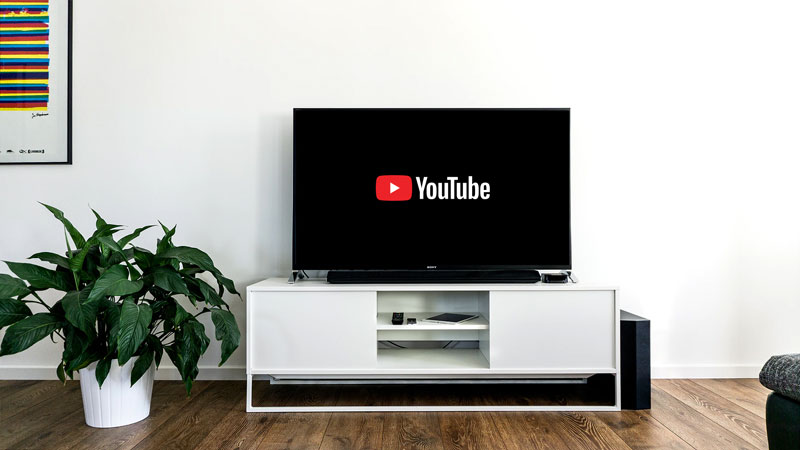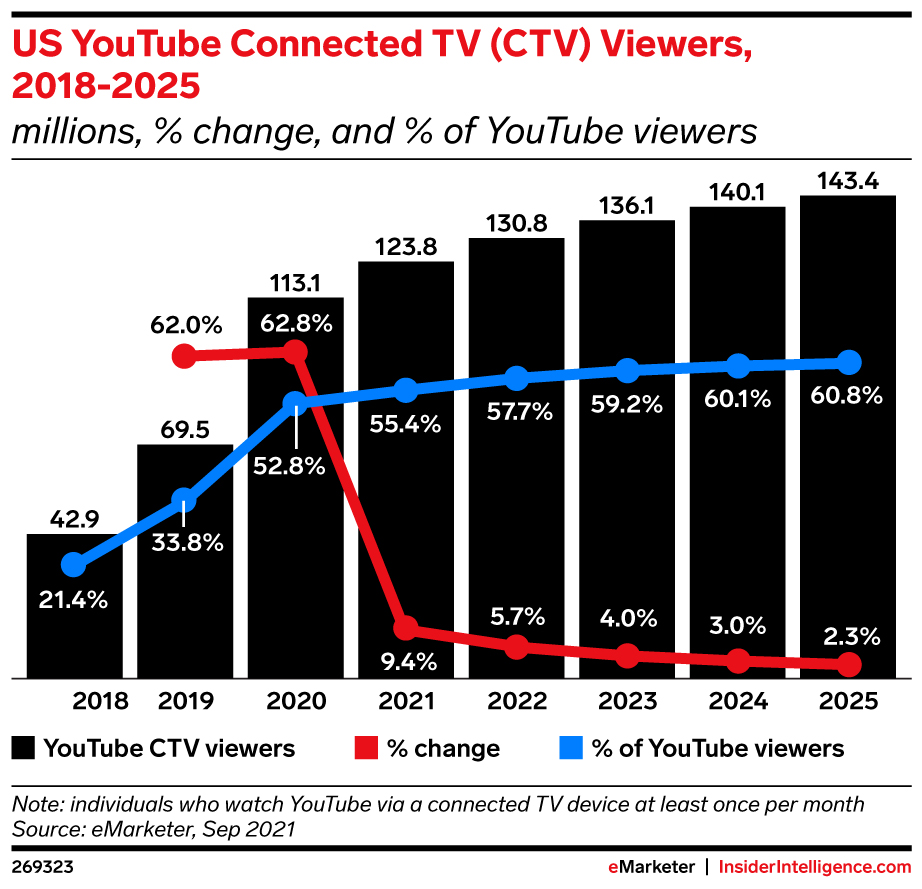
Why YouTube On TV Screens Should Be Top-Of-Mind For Advertisers
Digital streaming platforms have completely transformed how people consume content. Now, people don’t have to wait for prime time to watch their favorite video content, and their favorite video content isn’t necessarily a highly-produced network television show. It could be an influencer’s latest update, a sketch comedy skit, or even clips from that highly-produced network TV show. The impact of this is that people can find content they’re passionate about — prime time has become personal.
At the same time, linear TV viewership and cable subscriptions continue to decline. eMarketer forecasts that by 2023, less than half of U.S. households will have a paid TV subscription — a 4.8% drop from the previous year. However, consumers still want to watch their favorite video content on TV screens. As audience behaviors have shifted, Connected TV has emerged as a growing channel — and in particular, audiences are flocking to YouTube on their Connected TV Screens. While some advertisers still think of YouTube as primarily a desktop or mobile destination, it’s evolved into the biggest ad-supported Connected TV platform. In fact, eMarketer anticipates that more than half (57.7%) of YouTube viewers will watch content on CTV devices in 2022.
Nielsen’s data also confirms that among people ages 18 and up, YouTube is where they spend more than 50% of ad-supported watch time — and 35% of YouTube CTV viewers can’t be reached by any other ad-supported streaming service.
This is a massive opportunity for advertisers to extend their reach and drive impact. Reaching YouTube audiences on TV Screens gives advertisers all the benefits of living room audiences like leaned-back viewing modes and communal viewing, all of which can deepen engagement with an advertiser’s brand and message. Targeting against TV Screens also gives advertisers the full suite of ad products and measurement capabilities that they’re used to on YouTube.
When it comes to maximizing impact on TV Screens, here are some of the strategies that our team uses:
- Test New Tactics, Repeat, & Iterate: Experiment with a variety of targeting options and optimize toward the segments that drive the best performance. Targeting against cord-cutters & light TV viewers is always a good approach for advertisers that want to extend the reach of their linear buys. Advertisers can use video experiments to help understand which video assets perform best on TV Screens.
- Utilize Ad Sequencing/Remarketing: We’ve seen a lot of success with queuing up a sequence of ads to drive recall and consideration, so when a viewer sees a brand’s ad on their TV Screen, we can remarket to that viewer through another, adjacent ad, continuing to tell the brand’s story and deepening the viewer’s engagement with the brand.
- CPM Buying: Advertisers that make a lot of linear TV buys, or other advertisers used to buying impressions in bulk, should consider CPM buys on YouTube on TV Screens for greater efficiencies.
Advertisers need to be where their audience is watching. As audiences pivot to streaming video platforms, and overwhelmingly toward YouTube on TV Screens, advertiser strategies should evolve to engage them there.
Want to learn more about how Pixability can help you drive impact through TV Screens on YouTube? Get in touch with our team to set up a demo.
